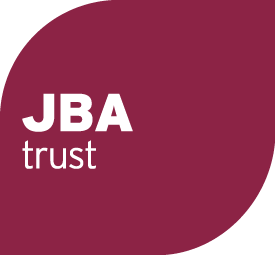Mapping the scientific evidence about working with nature to reduce flood risk
Working with natural processes can help to protect, restore and emulate the natural functions of river basins, floodplains and coasts to reduce flood risk whilst providing other benefits. This concept of working with nature is sometimes also called Nature-based Solutions (NbS) or Natural Flood Management (NFM).
Our map shows places that have been mentioned in research studies about working with nature published between 2017 and 2023.
In 2017, the Environment Agency in England published an Evidence Base about the scientific evidence and state-of-art practices in NFM. An updated evidence directory was published in February 2025, including a new review of the evolving research literature between 2017 and 2023.
Our aim is to build up a geographical overview of the literature that can be explored interactively. We have not mapped each and every study site. Some of the studies refer to locations in general terms, or to regions, in which case we have tried to identify a point on the map that is indicative of the study location. Each point on the map has a popup with a link to the source paper or report.
How we mapped the studies
Where publications include details about specific field sites or communities, we captured their locations and tried to find the best matches on the map. Where possible, we used coordinates that were stated explicitly in the original publication. In many cases, we had to rely instead on identifying and geocoding relevant locations manually, using contextual information from the published work including place names and maps. For studies that refer to a large number of locations, we tried to capture a representative sub-set.
For laboratory experiments, we mapped the institutional location of the first author.
If a study refers to more than one place, we have mapped each place using the same colour marker, with different colours being assigned randomly to different studies. Each of the publications has been assigned a unique study ID. The marker popup labels include a list of the places we captured for a given study ID.
Some of the publications report on models or reviews that cover large areas, for which we tried to find a suitable geographical centroid as a representative point location.
Other studies we looked at cover very large regions, including global reviews, or are not geographically specific. They are listed in a separate file, which can be downloaded here:
Corrections and feedback
We have reviewed the data to check the plausibility of the geocoding. Even so, there may still be errors or omissions. Please click here to send feedback and corrections using our online form. We intend to update the map in future to incorporate corrections and other improvements.
Disclaimer
Please note that the data published here is for research only; JBA Trust makes no warranty of fitness for any particular purpose and accepts no liability for any use that may be made of the data.
Acknowledgements
We are grateful for support from Lancaster University’s internship programme, and from contributors to the Working with Natural Processes Evidence Directory. JBA Trust project reference W23-0974.
